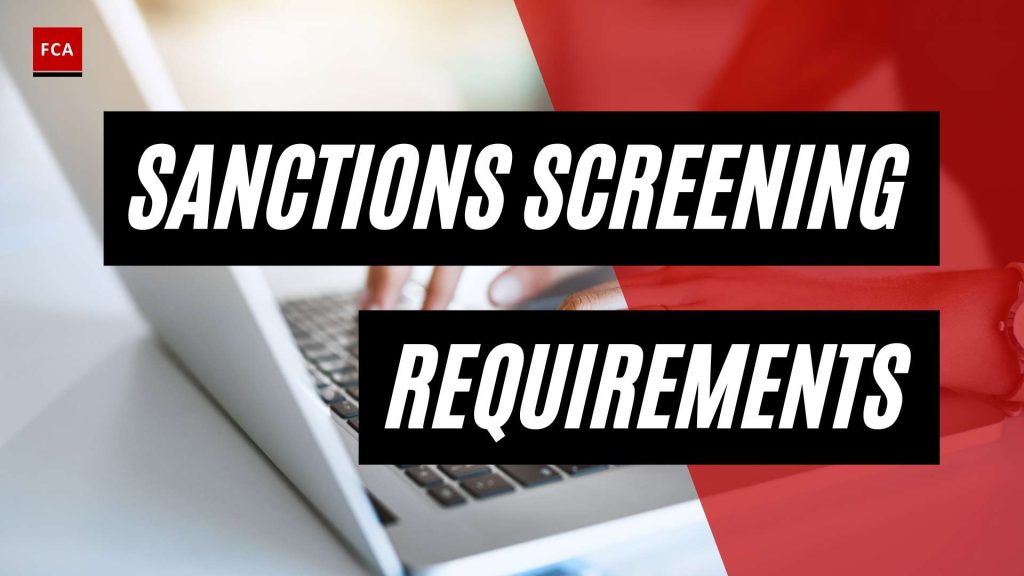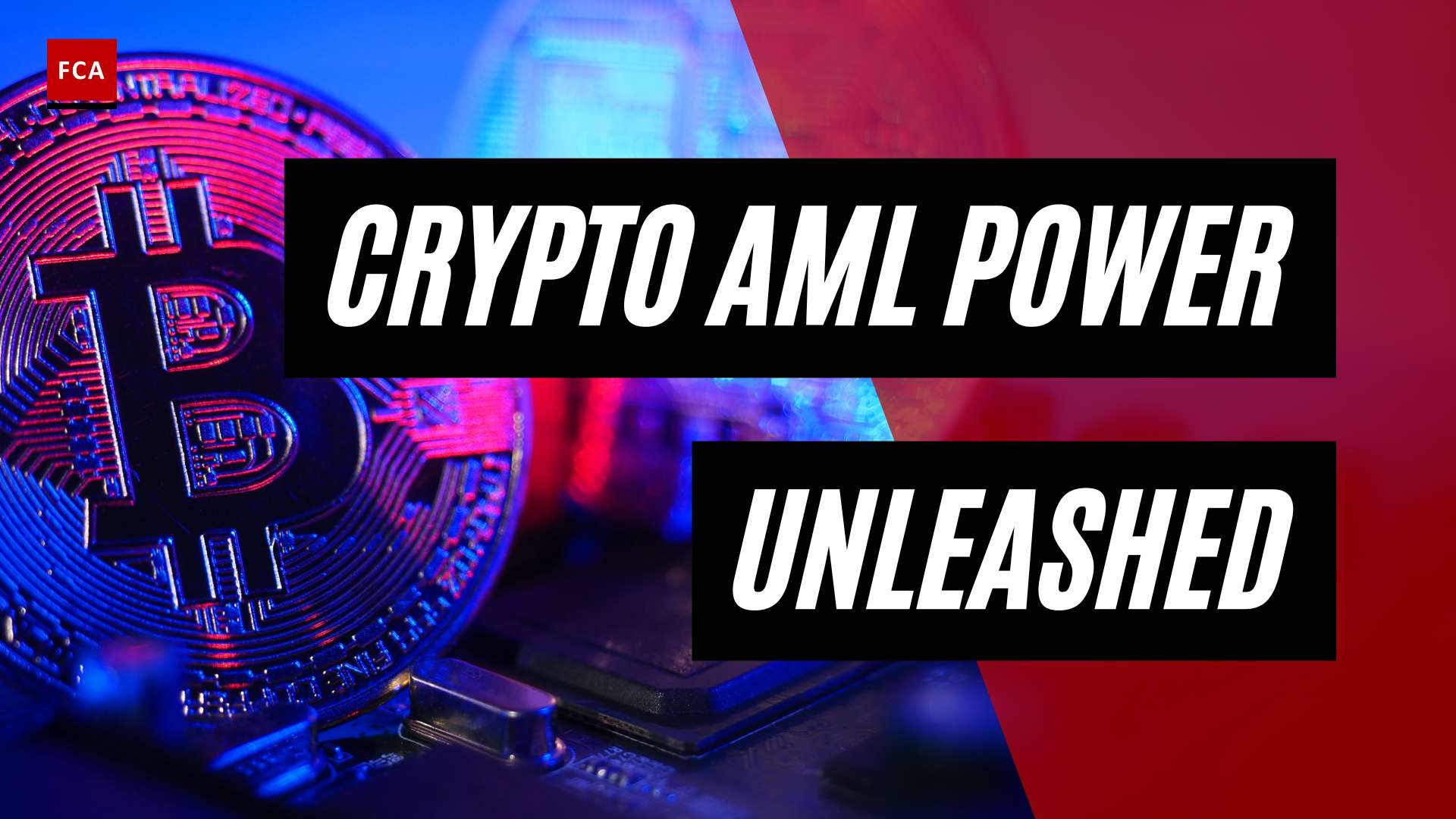Understanding Sanctions Screening
To effectively combat money laundering and prevent the financing of terrorism, financial institutions and organizations must adhere to strict compliance requirements. One crucial aspect of Anti-Money Laundering (AML) compliance is sanctions screening. In this section, we will delve into what sanctions screening entails, its importance in AML compliance, and the key regulatory frameworks that govern this practice.
What is Sanctions Screening?
Sanctions screening is the process of identifying and evaluating individuals, entities, and transactions against various sanctions lists and databases. These lists are maintained by governmental and international bodies and contain the names of individuals, organizations, and countries that are subject to economic, trade, or financial restrictions due to their involvement in illegal activities or posing a threat to global security.
The primary objective of sanctions screening is to detect and prevent transactions with sanctioned parties. By screening individuals and entities against these lists, financial institutions can identify potential risks and take appropriate actions to mitigate them. Sanctions screening plays a vital role in safeguarding the integrity of the global financial system and promoting compliance with international sanctions regimes.
Importance of Sanctions Screening in AML Compliance
Sanctions screening is a critical component of AML compliance programs. By incorporating effective sanctions screening measures, financial institutions can fulfill their regulatory obligations and contribute to the global fight against money laundering and terrorist financing.
Through sanctions screening, financial institutions can:
- Identify and prevent transactions with individuals or entities involved in illegal activities or supporting terrorism.
- Comply with legal and regulatory requirements imposed by various international bodies, such as the Financial Action Task Force (FATF), the Office of Foreign Assets Control (OFAC), and other regional regulatory authorities.
- Protect their reputation and maintain the trust of customers, stakeholders, and regulatory agencies.
- Mitigate the risk of financial penalties, legal consequences, and reputational damage that may arise from non-compliance.
To ensure effective sanctions screening, financial institutions must stay up-to-date with the evolving sanctions lists and implement robust screening processes. Utilizing advanced sanctions screening tools and technologies, such as sanctions screening software and sanctions screening systems, can enhance efficiency and accuracy in the screening process.
Key Regulatory Frameworks for Sanctions Screening
Various regulatory frameworks and international agreements provide guidance and requirements for sanctions screening. These frameworks aim to harmonize global efforts in combating money laundering, terrorist financing, and other illicit activities. Some key regulatory frameworks include:
| Regulatory Framework | Description |
|---|---|
| Financial Action Task Force (FATF) | FATF is an intergovernmental organization that sets standards and promotes effective implementation of legal, regulatory, and operational measures to combat money laundering, terrorist financing, and proliferation financing. It provides recommendations and guidance for AML/CFT measures, including sanctions screening. |
| Office of Foreign Assets Control (OFAC) | OFAC is an agency of the U.S. Department of the Treasury responsible for administering and enforcing economic and trade sanctions based on U.S. foreign policy and national security goals. OFAC maintains various sanctions lists, and compliance with their regulations is mandatory for U.S. persons and entities. |
| European Union (EU) Sanctions | The EU imposes sanctions against individuals, entities, and countries to promote peace, security, and the rule of law. EU sanctions are binding on all EU member states, and compliance is mandatory. The EU maintains several sanctions lists that financial institutions must screen against. |
| United Nations Security Council (UNSC) Resolutions | The UNSC issues resolutions imposing sanctions on individuals, groups, and nations involved in activities that threaten international peace and security. These resolutions are binding on all UN member states, and financial institutions must comply with the sanctions imposed by the UNSC. |
Understanding and complying with these regulatory frameworks is crucial for financial institutions to establish effective sanctions screening programs and ensure compliance with global AML requirements.
By comprehending the fundamentals of sanctions screening, recognizing its significance in AML compliance, and staying informed about the relevant regulatory frameworks, financial institutions can implement robust and efficient sanctions screening practices to safeguard the integrity of the global financial system.
Sanctions Screening Requirements
In order to combat money laundering, terrorist financing, and other illicit activities, organizations are required to implement robust sanctions screening measures. These requirements aim to ensure that individuals and entities engaging in financial transactions are not on any sanctions lists or associated with sanctioned activities. Understanding the sanctions screening requirements is essential for organizations to meet their compliance obligations.
Identifying and Screening Individuals and Entities
The first step in sanctions screening is the identification and screening of individuals and entities involved in financial transactions. Organizations need to have systems and processes in place to collect and verify customer information, including names, addresses, and other relevant details. This information is then cross-referenced against various sanctions lists and databases to identify any matches or potential risks.
Sanctions screening involves checking individuals and entities against both national and international sanctions lists. These lists are maintained by regulatory bodies, government agencies, and international organizations such as the United Nations and the Office of Foreign Assets Control (OFAC). It is important for organizations to stay updated with the latest sanctions lists and regularly screen their customers, partners, and counterparties against these lists.
Understanding Sanctions Lists and Databases
Sanctions lists and databases play a crucial role in sanctions screening. These lists contain names of individuals, organizations, and countries that are subject to sanctions or restrictions. They provide a reference for organizations to identify and screen high-risk entities.
Sanctions lists can vary depending on the jurisdiction and regulatory framework. Some common sanctions lists include OFAC’s Specially Designated Nationals (SDN) list, the European Union Consolidated List, and the United Nations Security Council Sanctions Lists. These lists are regularly updated to include new designations and to reflect changes in international sanctions regimes.
To effectively comply with sanctions screening requirements, organizations need to have access to accurate and up-to-date sanctions lists and databases. They can utilize sanctions screening software, solutions, and systems to streamline the screening process and ensure comprehensive coverage. For more information on sanctions screening tools, check out our article on sanctions screening tools.
Compliance Obligations and Legal Requirements
Sanctions screening requirements are not just best practices, but legal obligations imposed by regulatory authorities. Organizations are obligated to comply with relevant laws and regulations, such as the USA PATRIOT Act, the Financial Action Task Force (FATF) recommendations, and local anti-money laundering (AML) regulations. Failure to comply with these requirements can result in severe penalties, reputational damage, and legal consequences.
Compliance obligations related to sanctions screening may include conducting ongoing due diligence, implementing risk-based approaches, and reporting suspicious activities to the appropriate authorities. It is essential for organizations to have a thorough understanding of the specific regulations and requirements that apply to their jurisdiction and industry. Our article on sanctions screening regulations provides more detailed information on the regulatory landscape.
By adhering to the sanctions screening requirements, organizations can contribute to the global efforts in combating financial crime and protecting the integrity of the financial system. Implementing effective sanctions screening processes, utilizing appropriate tools and technologies, and staying informed about changes in regulations are crucial in meeting compliance obligations and mitigating risks associated with sanctions screening.
Implementing an Effective Sanctions Screening Program
To ensure compliance with sanctions screening requirements, organizations must establish an effective sanctions screening program. This program involves assessing risk, establishing policies, implementing screening processes and technologies, and fulfilling monitoring and reporting obligations.
Assessing Risk and Establishing Policies
Before implementing a sanctions screening program, it is crucial for organizations to assess their risk levels. This risk assessment helps determine the extent of the program’s scope and the appropriate measures to mitigate potential risks. Factors such as the organization’s size, nature of business, customer base, and geographic reach should be considered during the risk assessment process.
Based on the risk assessment, organizations can establish policies and procedures that align with regulatory requirements and industry best practices. These policies outline the organization’s commitment to sanctions compliance and provide clear guidelines for employees to follow. Policies should cover aspects such as the identification of high-risk customers, ongoing monitoring of customer transactions, and reporting suspicious activities. Regular reviews of policies and procedures are necessary to ensure they remain up to date with evolving regulatory requirements.
Screening Processes and Technologies
To effectively screen individuals and entities against sanctions lists and databases, organizations need to implement robust screening processes and technologies. These processes involve regularly checking customer data against relevant sanctions lists, which may include government-issued lists, intergovernmental organization lists, and proprietary databases.
Organizations can employ various sanctions screening tools and technologies to automate the screening process and enhance efficiency. These tools utilize advanced algorithms and matching techniques to identify potential matches with sanctioned individuals or entities. Real-time sanctions screening solutions are particularly valuable, as they provide immediate feedback on potential matches during customer onboarding and transaction screening. For more information on sanctions screening tools, check out our article on sanctions screening tools.
Monitoring and Reporting Obligations
Once the sanctions screening program is in place, organizations must fulfill their monitoring and reporting obligations. Ongoing monitoring helps identify any changes in customer profiles that may trigger further scrutiny. It allows organizations to detect suspicious activities or changes in risk profiles that may necessitate enhanced due diligence.
Reporting obligations involve notifying relevant authorities when suspicious activities or potential matches with sanctioned individuals or entities are identified. Timely reporting is crucial to prevent illicit activities and maintain compliance with regulatory requirements. Organizations should have well-defined processes in place to ensure accurate and prompt reporting of suspicious activities.
By implementing an effective sanctions screening program, organizations can mitigate the risk of facilitating transactions with sanctioned individuals or entities. Through risk assessment and policy establishment, robust screening processes and technologies, and diligent monitoring and reporting, organizations can demonstrate their commitment to compliance and contribute to the global efforts against money laundering and terrorist financing.
Challenges and Best Practices in Sanctions Screening
As organizations strive to comply with anti-money laundering (AML) regulations, they face various challenges in implementing effective sanctions screening programs. These challenges can arise from the complexity of the regulatory landscape and the need to balance accuracy and efficiency in screening processes. To overcome these challenges, it is important to adopt best practices in sanctions screening. This section explores three key challenges and corresponding best practices.
Dealing with False Positives and False Negatives
One of the significant challenges in sanctions screening is managing false positives and false negatives. False positives occur when a legitimate transaction or individual is incorrectly flagged as a potential match to a sanctions list. On the other hand, false negatives occur when a true match is missed during the screening process. Both false positives and false negatives can be detrimental to a company’s operations, resulting in unnecessary delays, increased costs, and potentially missing actual sanctions risks.
To address this challenge, organizations should implement robust tuning and optimization processes for their sanctions screening systems. This involves fine-tuning the screening parameters, such as name matching algorithms and threshold settings, to reduce false positives and improve the accuracy of screening results. Regularly reviewing and updating sanctions lists and databases is also crucial to ensure that the screening process remains up to date and effective. Additionally, investing in advanced sanctions screening technologies and leveraging real-time screening capabilities can help minimize false positives and false negatives. For more information on sanctions screening tools and technologies, refer to our article on sanctions screening tools.
Maintaining Data Integrity and Accuracy
Maintaining data integrity and accuracy is another key challenge in sanctions screening. Organizations must ensure that the data used for screening, such as customer information and sanctions lists, is complete, reliable, and up to date. Inaccurate or incomplete data can lead to ineffective screening and result in missed risks or false alerts.
To address this challenge, organizations should establish robust data governance practices. This includes implementing data quality checks and validation processes to identify and rectify any inconsistencies or errors in the data. Regularly updating and validating customer information is crucial, especially in dynamic environments where individuals and entities may undergo changes. Leveraging automated data management and validation tools can help streamline these processes and improve data integrity. For more insights into the sanctions screening process, refer to our article on sanctions screening process.
Training and Continuous Improvement
Maintaining a well-trained and knowledgeable workforce is essential for effective sanctions screening. Staff members involved in the screening process should possess a deep understanding of the regulatory requirements, sanctions lists, and screening procedures. Lack of training and awareness can lead to errors, inefficient processes, and compliance breaches.
To address this challenge, organizations should invest in comprehensive training programs that cover the fundamentals of sanctions screening, including the identification of red flags and suspicious activities. Training should be provided to both new employees and existing staff members, and it should be regularly updated to reflect changes in regulations and best practices. Continuous improvement efforts, such as conducting regular reviews and audits of the screening program, can help identify areas for enhancement and ensure ongoing compliance. For more information on sanctions screening regulations, refer to our article on sanctions screening regulations.
By addressing the challenges of false positives and false negatives, maintaining data integrity and accuracy, and investing in training and continuous improvement, organizations can enhance the effectiveness and efficiency of their sanctions screening programs. Implementing best practices in sanctions screening is crucial for mitigating risks, ensuring compliance, and safeguarding against potential financial and reputational damage.
The Future of Sanctions Screening
As the world of compliance and anti-financial crime continues to evolve, so does the field of sanctions screening. The future of sanctions screening is shaped by emerging technologies, an evolving regulatory landscape, and the increasing role of artificial intelligence and machine learning.
Emerging Technologies and Innovations
Advancements in technology have played a significant role in enhancing the efficiency and effectiveness of sanctions screening processes. Emerging technologies and innovations are continually being developed to address the evolving challenges in compliance. Some key developments include:
-
Artificial Intelligence (AI) and Machine Learning (ML): AI and ML technologies are revolutionizing the way sanctions screening is conducted. These technologies can analyze vast amounts of data, identify patterns, and detect potential matches more accurately. By continuously learning from data, AI and ML algorithms can improve the screening process over time, reducing false positives and increasing detection rates.
-
Automation and Robotics: Automation and robotics are streamlining sanctions screening processes by automating repetitive tasks and reducing manual efforts. Robotic Process Automation (RPA) can handle data extraction, validation, and entry, freeing up compliance professionals to focus on more complex tasks. This automation not only enhances efficiency but also reduces the risk of human errors.
-
Blockchain Technology: Blockchain technology has the potential to transform sanctions screening by providing a decentralized and immutable ledger for recording and verifying transactions. The use of blockchain can enhance transparency, traceability, and data integrity in the screening process. By leveraging distributed ledger technology, organizations can improve the accuracy and reliability of their screening results.
Evolving Regulatory Landscape
The regulatory landscape surrounding sanctions screening is constantly evolving. Governments and regulatory bodies worldwide are continuously updating and expanding sanctions lists to combat money laundering, terrorist financing, and other illicit activities. Compliance professionals need to stay informed about these changes to ensure their screening processes remain up to date and compliant.
Additionally, international cooperation and information sharing among regulatory bodies have become crucial in combating global financial crime. Organizations must adapt to the changing regulatory landscape, stay updated on sanctions lists, and implement a robust framework to comply with the ever-evolving requirements.
The Role of Artificial Intelligence and Machine Learning
Artificial intelligence and machine learning are revolutionizing the field of sanctions screening. These technologies have the potential to significantly enhance detection capabilities, reduce false positives, and improve overall efficiency. By leveraging AI and ML algorithms, organizations can build more intelligent and adaptive sanctions screening systems.
AI and ML can analyze vast amounts of data from various sources, such as news articles, social media, and public records, to identify potential risks and connections. These technologies can also learn from historical screening data, allowing them to make more accurate predictions and identify emerging patterns. This enables organizations to stay ahead of evolving threats and adjust their screening strategies accordingly.
By incorporating AI and ML into sanctions screening systems, organizations can enhance their risk management processes, increase detection rates, and improve overall compliance with sanctions screening requirements.
The future of sanctions screening is characterized by the integration of emerging technologies, adaptation to regulatory changes, and the utilization of AI and ML algorithms. Compliance professionals should embrace these advancements to ensure effective and efficient sanctions screening processes that align with the evolving landscape of anti-financial crime measures.








